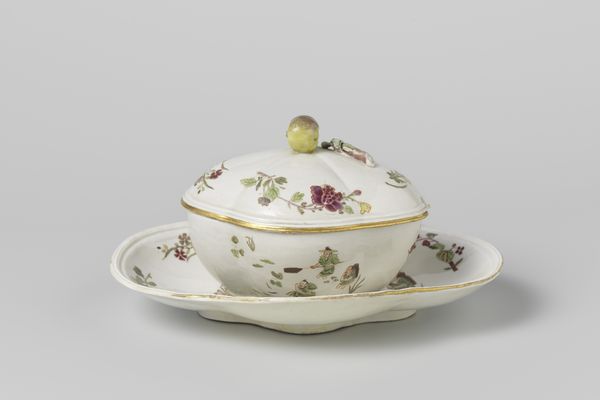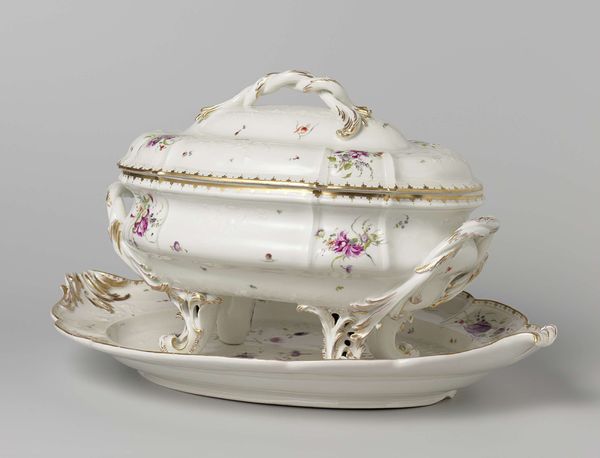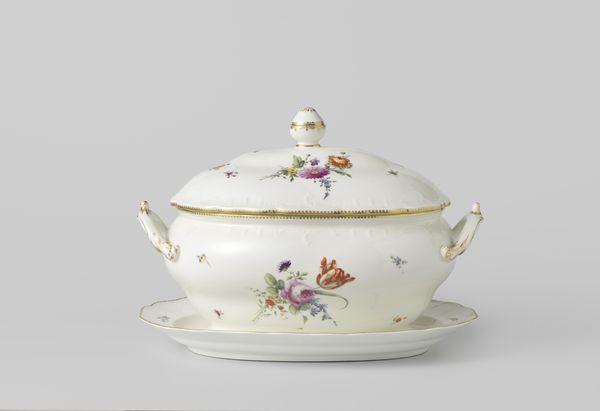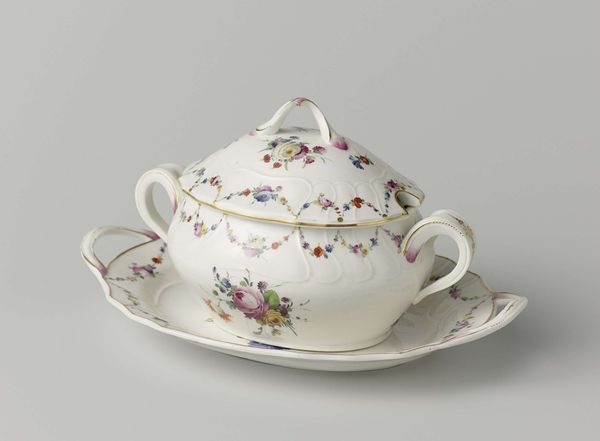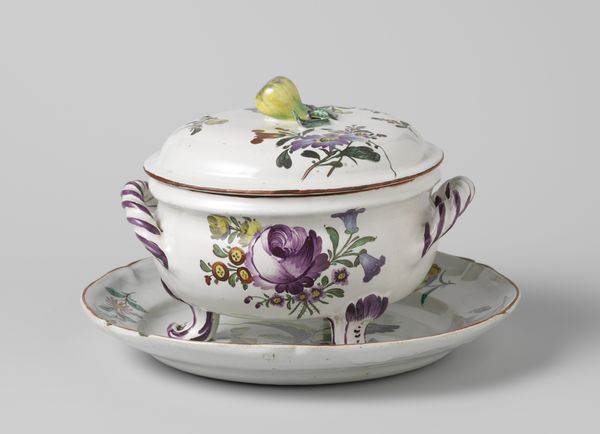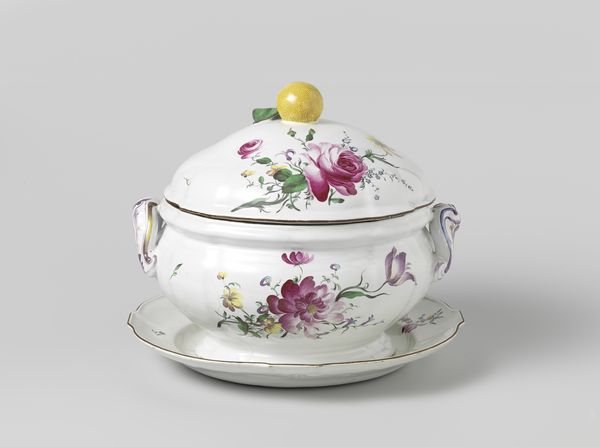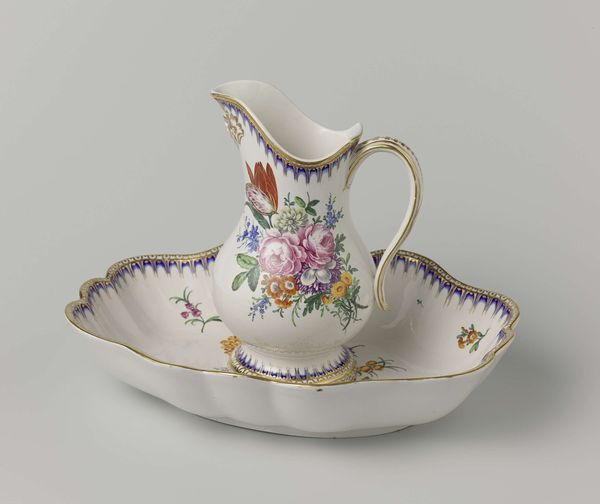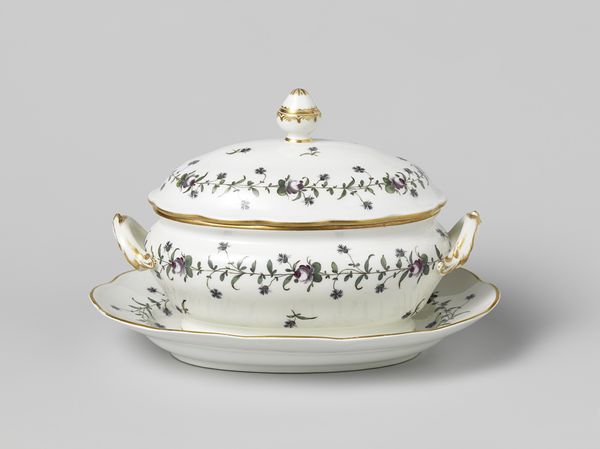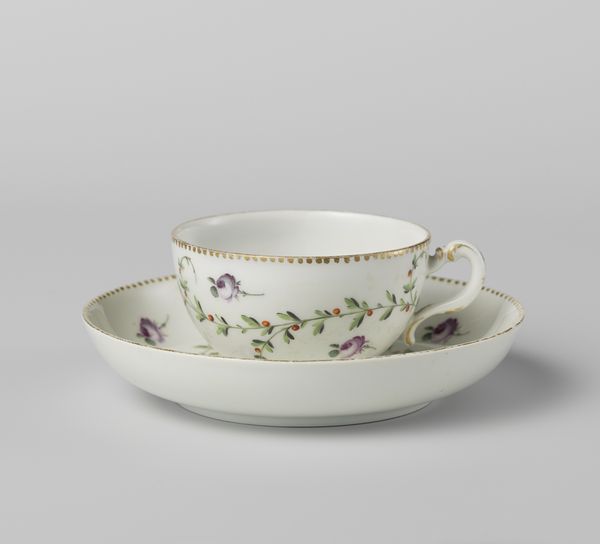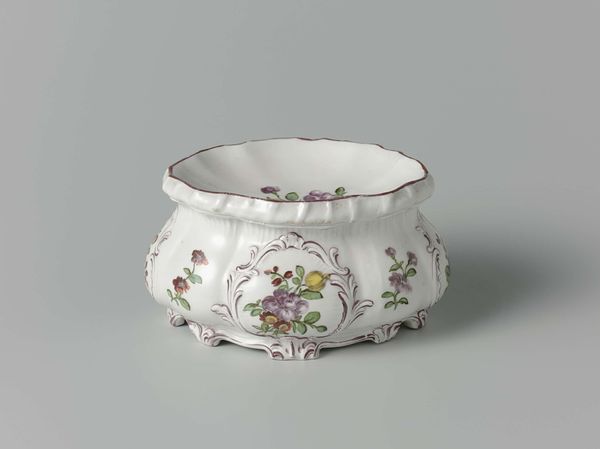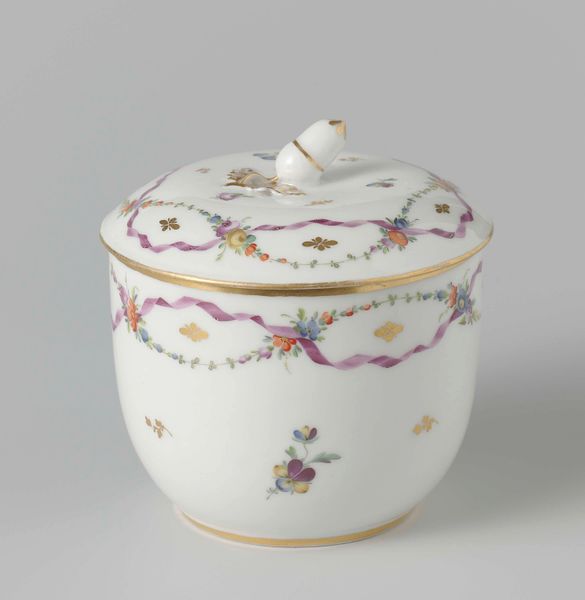
Copyright: Rijks Museum: Open Domain
This butter dish and stand was made by Doornik out of refined clay, probably in the 18th century. The material, porcelain, had to be mined, purified, shaped on a wheel, fired at high temperatures, painted with colourful enamels, and fired again. The leaf molding, too, was carefully impressed, requiring skill and precision. The production of porcelain, in particular, required a high degree of specialization and division of labour. While the output was luxury goods like this butter dish, the shop floor would have been a place of strict hierarchy, and very likely some exploitation. Consider, too, the purpose of the object. It is designed to contain butter, a substance that, until the advent of refrigeration, was associated with the countryside and agricultural labour. As such, this refined object can be seen to mediate between an industrialised setting of manufacture, and an agrarian context of consumption. In its design, the piece bridges these two worlds.
Comments
rijksmuseum about 2 years ago
⋮
One of Lijncker’s suppliers, the factory in Tournai, produced only pâte-tendre, or soft-paste porcelain. This forerunner of true porcelain consists of a mixture of white clay and ground glass. Characteristic of Tournai porcelain is spirally moulded border, which is found on both the butter dish and on the stand. The meticulously painted flowers on the butter dish are typical of The Hague porcelain.
Join the conversation
Join millions of artists and users on Artera today and experience the ultimate creative platform.
